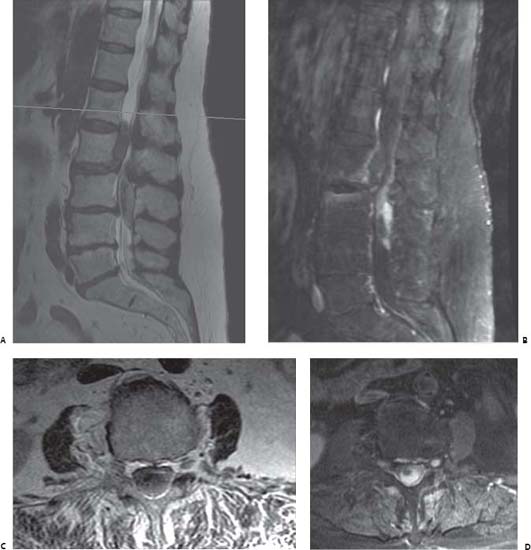Case 98 Lumbar Epidural Hematoma Fig. 98.1 (A) Magnetic resonance imaging of lumbar spine with sagittal T2-weighted image, (B) axial T2-weighted image through the L2 vertebral body and (C) axial T2-weighted image through L3 vertebral body. Fig. 98.2 (A) Magnetic resonance imaging of lumbar spine with sagittal T2-weighted image, (B) sagittal T1-weighted image with gadolinium contrast infusion (T1W+C), (C) axial T2-weighted image through lower L3 vertebral body, and (D) axial T1W+C image through lower L3 vertebral body.

 Clinical Presentation
Clinical Presentation
 Questions
Questions

 Answers
Answers
< div class='tao-gold-member'>
98 Lumbar Epidural Hematoma
Only gold members can continue reading. Log In or Register to continue

Full access? Get Clinical Tree


